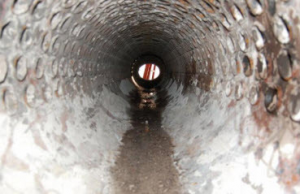Chemical Cleaning
Unplanned and unwanted deposits form in process and power plants of every type. Nuclear power and propulsion equipment, central power station boiler steam and feed systems, rocket fuel preparation and storage systems, sugar refineries, petrochemical manufacturing plants, oil refineries, poultry packaging stations, heating, ventilating and air conditioning plants, cement kilns, diaries, steel mills, breweries… the list covers the whole range of 20th century technology.

Soon, rather than later, every such plant relying on the circulation and reaction of gases and liquids will suffer operational impairment as a result of formations of deposits on it’s own working surfaces.
These deposits may result from the presence in process fluids of low-level impurities undergoing unplanned reactions. Local temperature variations may cause fluid breakdown, with consequent deposition. Corrosion products may form layers at the point of origin or detach to create obstructive formations downstream. The list of possible causes of deposit formation is also a long one. The effects of such formations obviously depend on the type of plant and location of deposit. Common penalties are reduction in heat transfer, in conversion coefficient or even in bulk output. Designers and operators of modern plants are well aware of these production hazards as a result of which much equipment is provided with access or ready dismantling features calculated to simplify and expedite manual or mechanical cleaning. Unfortunately such provision is neither universal nor uniformly effective. Chemical cleaning, involving circulation through the affected plant of appropriate cleaning solutions or solvents has therefore established a secure place for itself in the field of plant maintenance. Some of the techniques currently in use date back to over half a century, whilst others are as recent as the plant for which they were developed. All depend on the selection and controlled application of solvents or chemical solutions capable of quickly dissolving or disintegrating unwanted deposits without harm to the materials of plant construction. Some cleaning processes are simple one-step operations; others are more complex and sophisticated, perhaps involving two or more actual cleaning phases followed by surface passivation or drying and coating. In some cases final protection of the cleaned unit may involve the establishment of wet or dry storage regimes.
To detail here the full range of processes and chemicals utilised by the modern chemical cleaning contractor would be inappropriate. in general, greases and oils are removed by circulation of strong alkaline solvent emulsifier dispersions, or to chlorinated hydrocarbons applied in liquid or vapour phase. Water scales, rust, mill scales, non-ferrous corrosion products are taken up by means of (inhibited) acid solutions of various types or by sequestrating agents. Cleaned surfaces are passivated by controlled oxidising solutions. It will be readily appreciated that selection of the cleaning process most appropriate to a given combination of plant and deposit calls for both training and considerable experience. The penalties for misguided selection or mal-application of cleaning solutions, many of which incorporate ingredients potentially hazardous to personnel or plant, could be severe.
